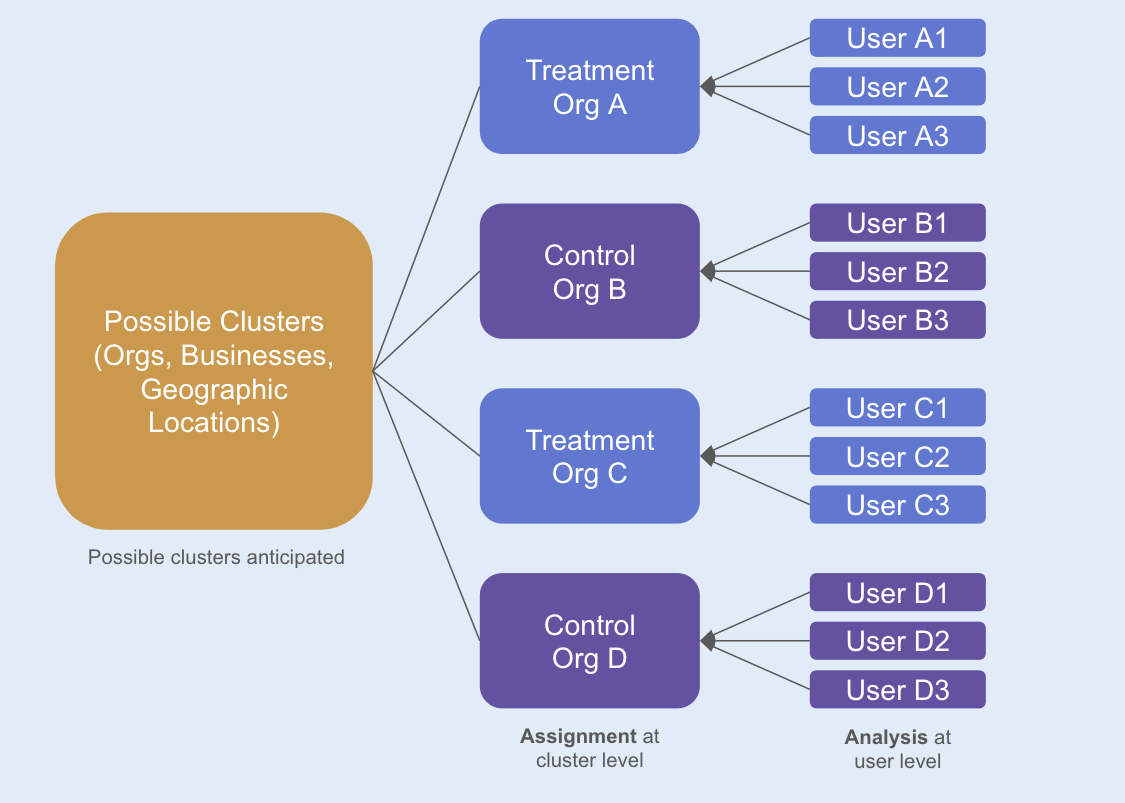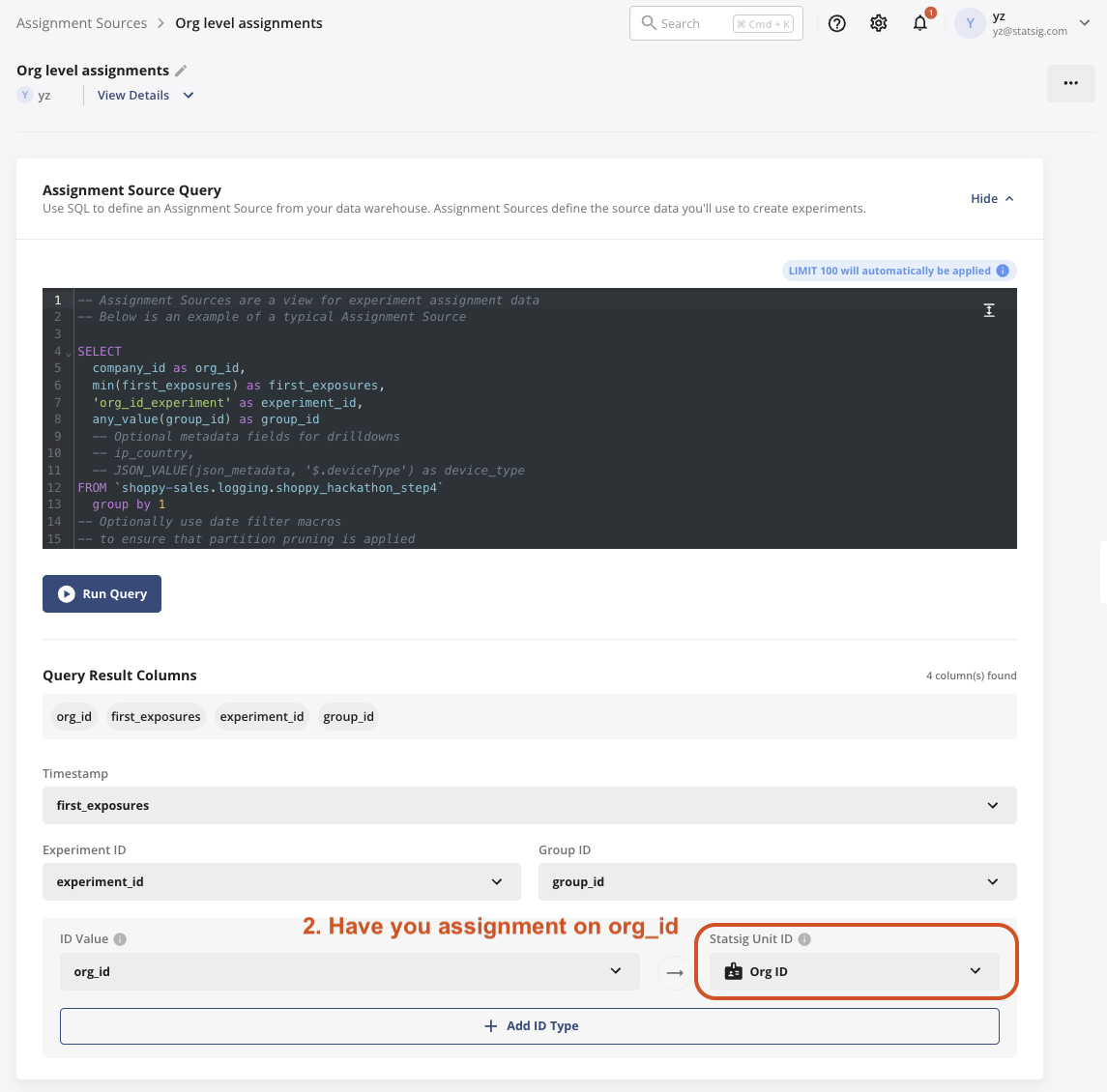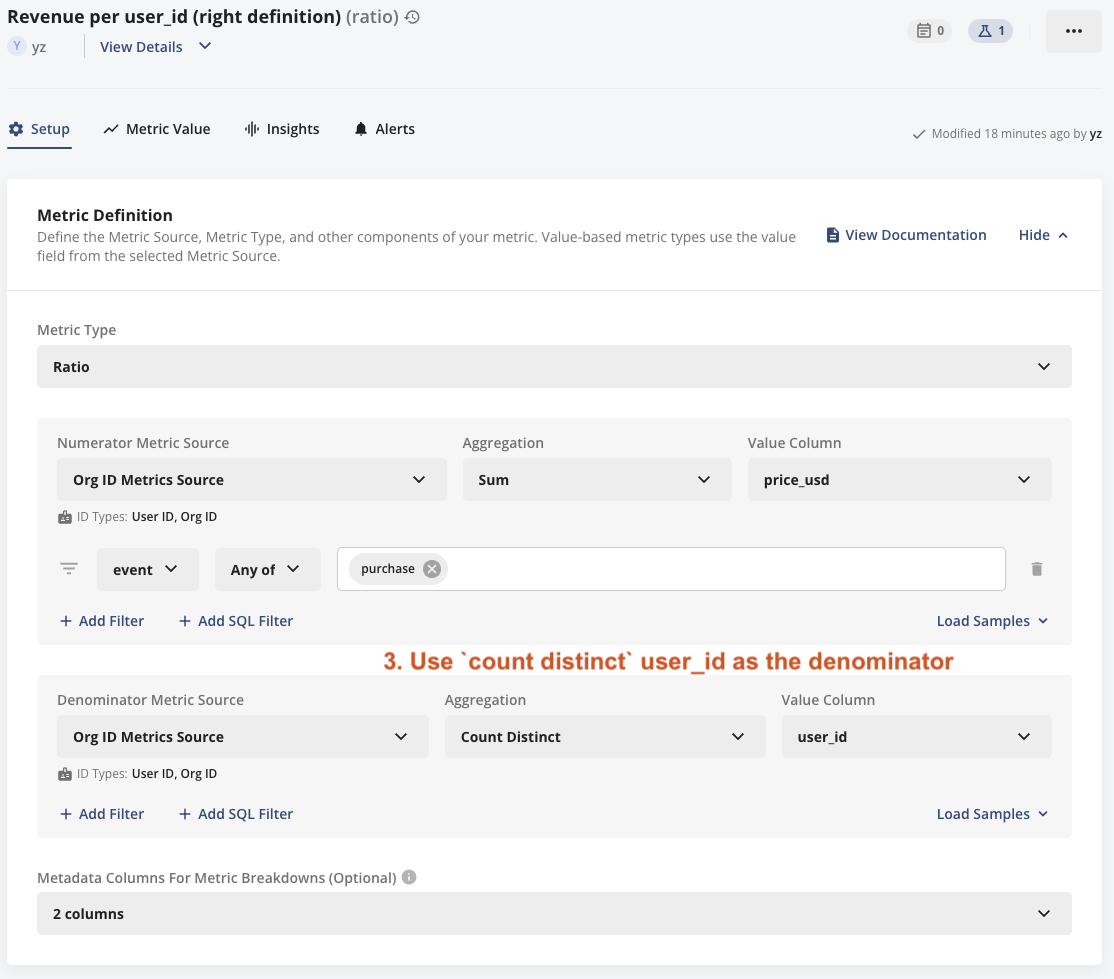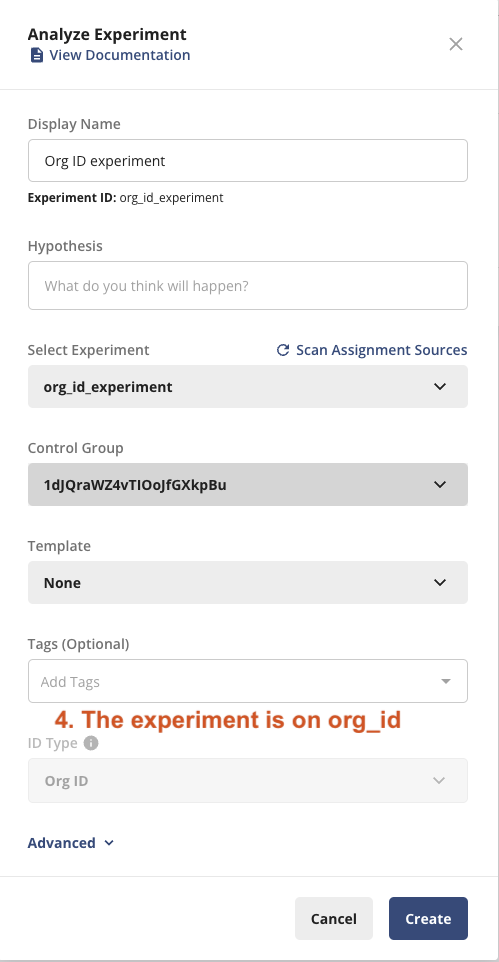- Measuring session-level metrics for a user-level experiment. Ratio metrics are commonly used to solve this (this doc).
- Measuring logged-in metrics (eg. revenue) on a logged-out experiment. There are two solutions: a. Running the experiment at the device-level, with device-level metrics collected even after the user is logged-in. b. Using ID resolution.

Example: Organizations and Users
Scenario:- Your metrics source has both
org_idanduser_id. - The relationship between
org_idanduser_idis 1-to-many. A singleorg_idcan be associated with multiple users (user_id), but auser_idis only associated with a singleorg_id. - Your experiment is assigned at the
org_idlevel. - You are interested in understanding the treatment effect at the
user_idlevel, such as revenue per user.
1. Setup the metric source with org_id as an ID type.
- In this table, each row of data should have both
org_idanduser_id.

2. Choose your assignment source, where the unit of assignment is org_id.

3. Define your metric of revenue per user_id.
- Your denominator should be
count distinct user_idinstead ofunit count, because the latter is equivalent tocount distinct org_idin anorg_idlevel experiment.

4. Set up the experiment with org_id

Statistics in the backend
In the Stats Engine, we utilize the delta method to calculate variance and confidence intervals.- For mean metrics, we record a value indicating the number of observations per exposed unit in the records column of the staging data. This acts as the denominator or cluster-size value for delta calculations.
- For general ratio metrics, we monitor the two-component metrics (the ratio and the denominator) as independent metrics and combine them during the pulse analysis to derive a single metric from them.

